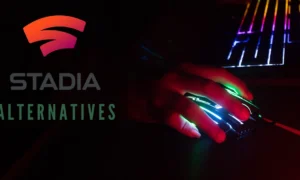In today’s fiercely competitive restaurant industry, where the success rate for all restaurants hovers around 20%, providing an exceptional customer experience is crucial for long-term success.
However, the reality is that approximately 60% of restaurants face the difficult challenge of closing down within their first year of operation. Even more striking is the fact that a staggering 80% of restaurants fail to sustain their business within five years of opening.
In this challenging landscape, restaurant management software has emerged as a powerful tool that enables owners and managers to revolutionize their operations and interactions with patrons.
By harnessing the power of technology, restaurant management software empowers establishments to enhance the customer experience in numerous ways, increasing the odds of survival and long-term success. In this article, we will explore the various ways in which restaurant management software can elevate the dining experience for customers.
7 Ways Restaurant Management Software Enhances Customer Experience
1. Streamlined Ordering Process
Restaurant management software streamlines the ordering process, resulting in quicker and more precise service. By utilizing intuitive interfaces and handheld devices, servers can efficiently take orders at the table, eliminating the need for time-consuming back-and-forth communication.
This streamlined approach significantly reduces errors and ensures order accuracy, ultimately expediting the overall dining experience. Interestingly, according to the preference of a significant majority of 80% of diners, technology-driven experiences are favored in restaurants.
Moreover, advanced restaurant management software systems can proficiently handle special requests, dietary preferences, and allergies, offering customers a personalized and tailored dining experience that aligns with their specific needs and preferences.
Related: Strategies for Restaurant Owners to Boost Profit Margins
2. Improved Order Accuracy and Efficiency
CheddrSuite notes that with restaurant management software in place, the chances of order errors and mix-ups are significantly reduced. The software streamlines communication between the front-of-house and back-of-house operations, ensuring that the kitchen staff receives accurate and detailed order information. This results in quicker preparation times, timely delivery of dishes, and an overall seamless dining experience for customers.
3. Personalization and Customization
Restaurant management software enables restaurants to offer personalized experiences to their customers. By storing guest preferences and dining history, the software allows staff to cater to individual needs.
From remembering favorite dishes and drink preferences to offering tailored recommendations, this level of personalization creates a memorable dining experience that keeps customers coming back.
4. Efficient Table Management
Efficiently managing tables is crucial for delivering a smooth customer experience. Restaurant management software offers features like table reservation systems, waitlist management, and real-time table availability tracking.
By optimizing table turnover and minimizing wait times, customers experience faster seating, reduced crowding, and a seamless transition from entry to dining.
See Also: 9 Common Pitfalls for Restaurants and Strategies to Avoid Them
5. Seamless Integration of Online Ordering
In today’s digital age, where customer preferences are evolving rapidly, online ordering has gained significant popularity.
Restaurant management software plays a crucial role in meeting this demand by seamlessly integrating with online ordering platforms and third-party delivery services. The convenience and accessibility provided by these digital channels are undeniable.
In fact, according to a HungerRush survey of 1,000 U.S. consumers, a staggering 79% of customers express their anticipation of utilizing technology to place orders at casual restaurants.
With the integration of online ordering, customers can effortlessly browse menus, place orders, and make payments online, ensuring a consistent and streamlined experience, whether they choose to dine in or opt for delivery or takeout.
6. Loyalty Programs and Customer Engagement
Restaurant management software frequently incorporates integrated loyalty program functionality. This feature enables restaurants to acknowledge and incentivize their loyal customer base while also monitoring their preferences.
With the ability to provide exclusive promotions or discounts, establishments can leverage customer data obtained through these loyalty programs. In fact, according to Deloitte’s research, it was found that, on average, consumers actively engage with two restaurant loyalty programs.
Notably, 79% of the surveyed respondents confirmed that their participation in these programs significantly impacts their dining decisions. By utilizing the insights gained from customer data, restaurants can effectively engage with their patrons through targeted marketing campaigns, personalized offers, and memorable events.
These initiatives contribute to fostering a sense of belonging and appreciation, thus elevating the overall customer experience.
Related: Guide to Starting a Profitable Ghost Kitchen Business
7. Real-Time Feedback and Responsiveness
Restaurant management software plays a pivotal role in enabling real-time feedback collection from customers, allowing restaurants to gather valuable insights regarding the dining experience. This feedback, whether obtained through digital surveys, online reviews, or integrated feedback mechanisms, is highly valuable for establishments.
In fact, as HungerRush‘s research indicates, 60% of Americans who dine out or order takeout consider reviews as one of their primary sources when deciding on a new restaurant. Furthermore, an impressive 85% of individuals emphasize the importance of easily accessing online reviews and restaurant information.
By leveraging this feedback, restaurants can promptly address any concerns or issues raised by customers, ensuring timely resolutions and facilitating continuous improvement to enhance the overall dining experience.
Also Read: 10 Food Tech Trends and Innovations
Conclusion
Restaurant management software has become an indispensable tool in today’s restaurant industry, with businesses increasingly relying on these technologies. The global market for restaurant management software experienced remarkable growth, reaching a substantial value of USD 4,556.4 million in 2022.
Projections indicate that this market will continue to expand at an impressive compound annual growth rate (CAGR) of 16.3% from 2023 to 2030. By harnessing the power of restaurant management software, establishments can not only meet but exceed customer expectations, resulting in enhanced customer satisfaction and loyalty.
This, in turn, drives overall business success. With the ability to streamline operations and navigate the ever-changing market landscape, restaurant management software has become an essential asset for thriving in the dynamic food industry.





















